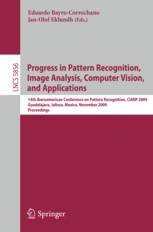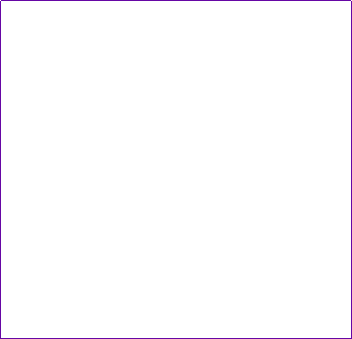|
The 14th Iberoamerican Conference of Pattern Recognition, CIARP’2009 was organized by the Mexican Association for Computer Vision, Neural Computing and Robotics (MACVNR) and sponsored by the International Association for Pattern Recognition (IAPR), the Cuban Association for Pattern Recognition (ACRP), the Mexican Association for Computer Vision, Neural Computing and Robotics (MACVNR), the Portuguese Association for Pattern Recognition (APRP), the Spanish Association for Pattern Recognition and Image Analysis (AERFAI), the Special Interest Group on Pattern Recognition of the Brazilian Computer Society (SIGPR-SBC), and the Chilean Association for Pattern Recognition (AchiRP). As with previous conferences in the series, CIARP’2009 attracted participants from around the world, who presented state-of-the-art mathematical methods and computing techniques for the areas of computer vision, pattern recognition, signal and image analysis, neural computing, as well as a wide range of their applications. There were 197 submissions; after a serious review process, 108 papers were accepted: 60 for oral and 48 for poster presentations. All of the papers had a scientific quality above the overall mean rating. Since 2008, the conference has been almost single-track, and therefore there was no real grading in quality between oral and poster papers. As an acknowledgment of a well-established conference, since 2005, the CIARP’2009 papers were published in Springer’s LNCS 5856, entitled Progress in Pattern Recogtion, Image Analysis, Computer Vision and Applications, Eduardo Bayro-Corrochano and Jan-Olof Eklund (Eds.). In addition, the visibility of the CIARP’2009 conference is further enhanced as the best 20 papers were selected for a special issue of the Journal of Pattern Recognition Letters that will appear by the end of 2010. The conference had 120 registered participants. We had only seven absences from 110 expected presentations, but three of them announced that they had late difficulties which hampered their participation. The conference program was highlighted by four internationally leading scientists who delivered the following invited lectures: · Prof. Maria Petrou, IAPR Fellow, Imperial College, London, UK, “A new imaging architecture and a challenge to the neuro-physiologists” · Prof. Walter Kropatsch, IAPR Fellow, TU Wien, Austria, “When pyramids learned walking” · Prof. Ioannis Kakadiaris, Computational Biomedicine Lab. Depts. of CS, ECE, and Biomedical Engineering, U. of Houston, “Challenges and opportunities for extracting cardiovascular risk biomarkers from non-contrast CT data” · Prof. Peter Sturm, INRIA Grenoble, Rhone Alpes, France, “3D and appearance modeling from images” Before the main conference, successful tutorials were held by: · Prof. Maria Petrou, “Texture analysis methods and applications” · Prof. Peter Sturm, “An overview of research in the computer vision area” · Prof. Eduardo Bayro-Corrochano, IAPR Fellow, CINVESTAV, Campus Guadlajara, Jalisco, Mexico, “Applications of geometric algebra in robot vision, graphics and medical imaging” together with · Dr. Dietmar Hildebrand, Technische University of Darmstad, Germany, “Efficient implementations of geometric algebra applications” · Prof. Walter Kropatsch, “We are building a topological pyramid” Between 30 to 40 participants attended each tutorial. On Sunday, November 15, 2009, the one-day CASI’2009 Workshop on Computational Advances of Intelligent Processing of Remote Satellite Imaginary chaired by Prof. Yuri Shkvarko, CINVESTAV, Unidad Guadalajara, Jalisco, Mexico, was held. It had 10 oral presentations and around 30 attendees. Based on article quality and the respective oral or poster presentation, the following papers were selected and awarded. The best award with the CIARP’2009 trophy, a diploma and 500 € · Germán Capdehourat, Andrés Corez, Anabella Bazzano, and Pablo Musé, “Pigmented skin lesions classification using dermatoscopic images.” Honorable mentions with a diploma: · Tetsuji Takahashi , Mineichi Kudo (IAPR Fellow), and Atsuyoshi Nakamura, “Classifier selection in a family of polyhedron classifiers.” · C. Cassisa, S. Simoens, and V. Prinet. “Two-frame optical flow formulation in an unwarping multiresolution scheme.” · Andrés Álvares Mesa, Juliana Valencia Aguirre, Genaro Daza Santacoloma, and Germán Castellanos Domínguez, “Automatic choice of the number of nearest neighbours in locally linear embedding.” Most of the attendees were accommodated in the conference hotel. The fees included lunches. Due to the ambiance and social setting, participants could meet for interesting discussions and look for academic and scientific cooperation. In addition, on the first conference day, a tour to the colonial area was organized that ended in a nice salsa club. The “crown of the conference” featured a free-of-charge guided tour to the downtown and a banquet in a colonial garden accompanied by superb mariachi music and a spectacular representation of local folk dances. The security for all the attendees during the conference and tourism activities was excellent as no incident was reported. The next CIARP 2010 conference will be held in Sao Paulo, Brazil, organized by Prof. Roberto M. Cesar Jr. of the Sao Paulo University (USP) and Prof. Isabelle Bloch, Telecom Paris-Tech., France, as General Chairs. |
|
Conference Report: CIARP 2009 |
|
Report prepared by Eduardo Bayro-Corrochano (Mexico) |



|
Conference Co-Chairs:
Eduardo Bayro-Corrochano, IAPR Fellow (Mexico) Jan Olof Eklundh, IAPR Fellow (Sweden) |
|
Proceedings of the conference have been published by Springer in the series Lecture Notes in Computer Science (Volume 5856)
Click on the image to go to the publisher’s web site for this volume. |





|
CIARP 2009 Organizers in good spirits. From left: Eduardo Bayro-Corrochano, Jan Olof Eklundh, Maria Petrou, and Ioannis Kakadiaris |
